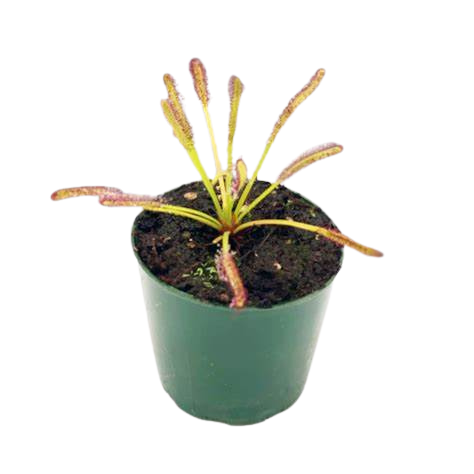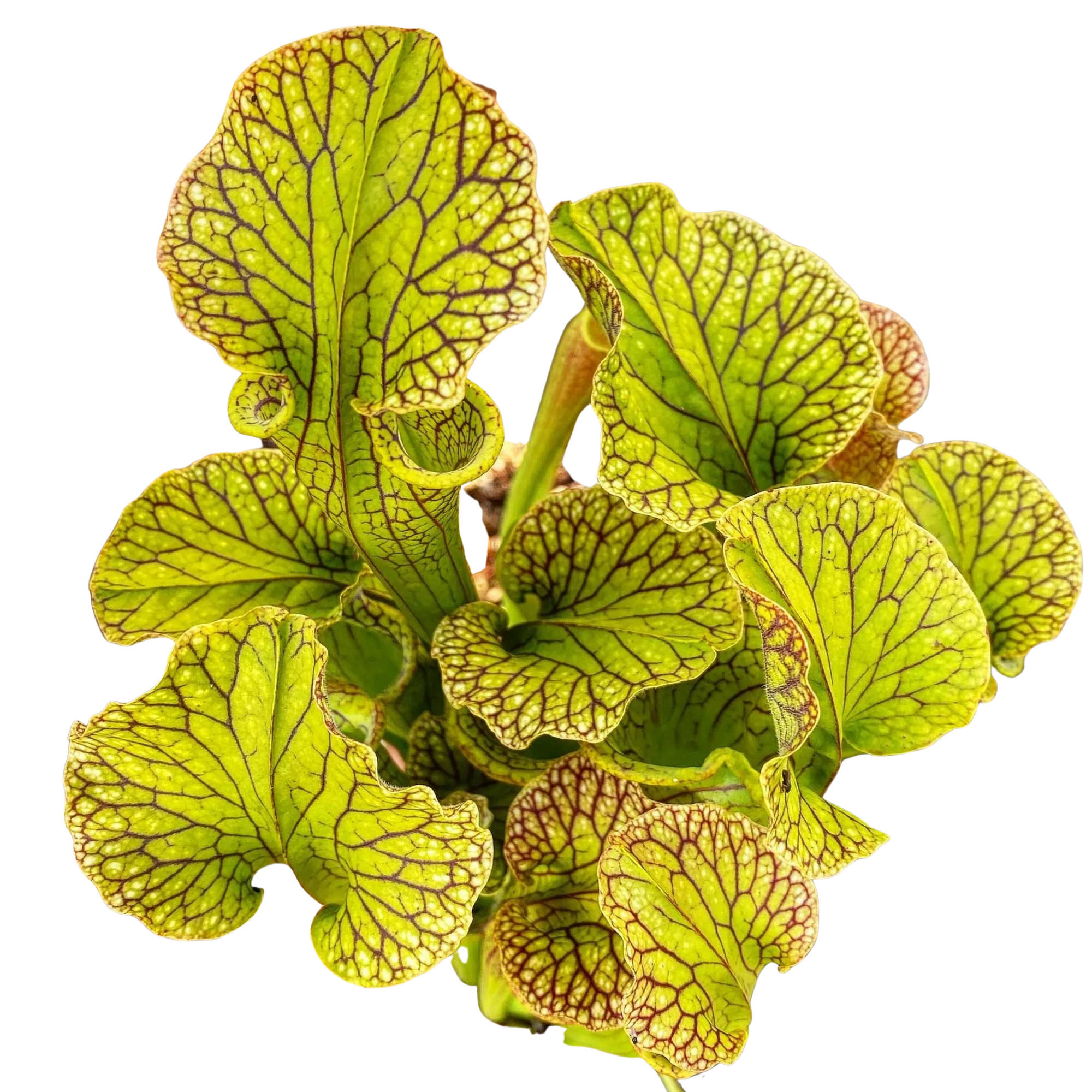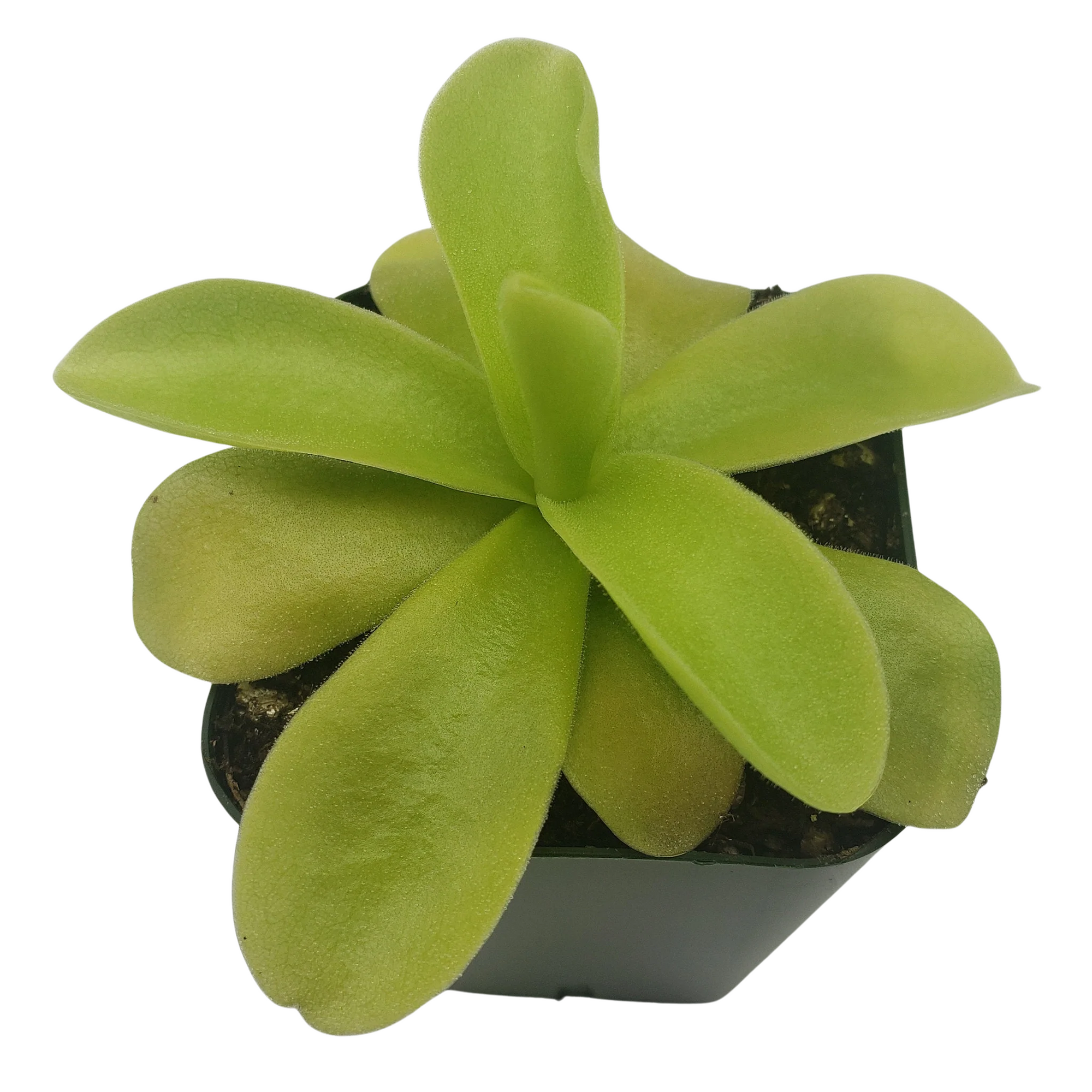Venus Flytraps are carnivorous perennials native exclusively to the boggy areas of coastal North and South Carolina. These plants are considered an endangered species due to disturbances in their habitat and are federally protected.
Watering: Keep wet at all times by maintaining a saucer with about 1" of water for your plant to sit in. Distilled, RO, or rainwater is ideal - it is not recommended to give your flytrap tap water.
Light Requirements: Requires bright light. Enjoys 12-16 hours of sunlight each day and would benefit from a grow light.
Humidity Needs: Moderate, prefers 60%-80%.
Soil Preference: Enjoys nutrient poor soil. Peat or sphagnum moss are ideal.
Fertilizing: Via insect consumption only. Do not use liquid fertilizers as this will burn and kill your plant. Ground up bloodworms or beta food can be used to supplement if you're concerned your plant isn't getting enough nutrition.
Repotting: Every 2-3 years to ensure soil quality.
Pet Safe: Yes
Dormancy: Allow your venus to enter dormancy by placing it in the cool or chilly place with no sun when fall turns to winter with shortened days. Place back in ideal light when days begin to lengthen in the spring.
Common Issues: Perceived issues include browning/blackening leaves as the plant enters dormancy, this is completely normal. Allowing your venus flytrap to dry out too much too often will eventually kill your plant, so be sure to maintain bog-like conditions.

Leave a comment
Comments will be approved before showing up.






